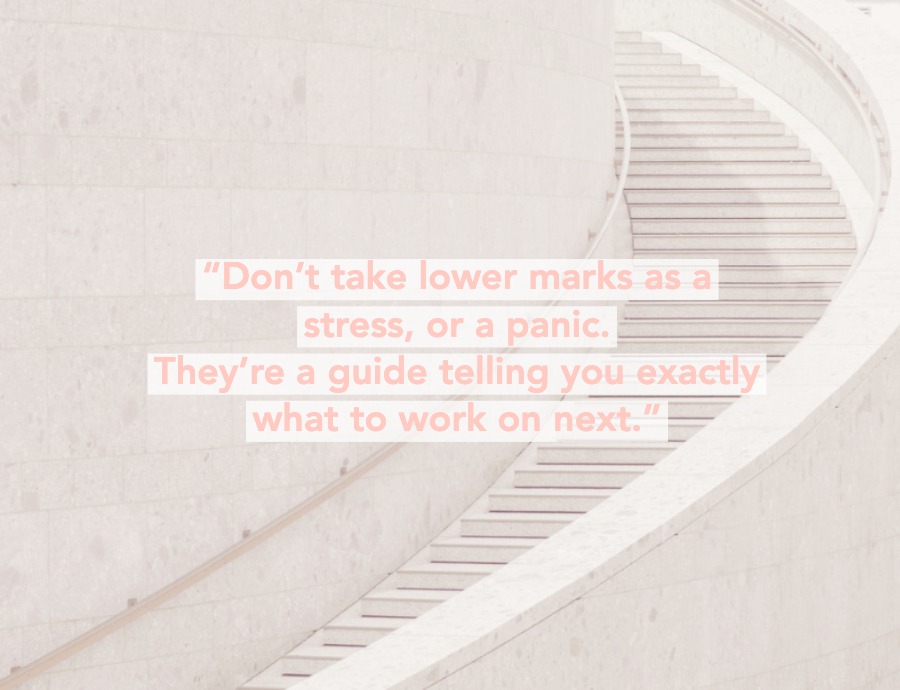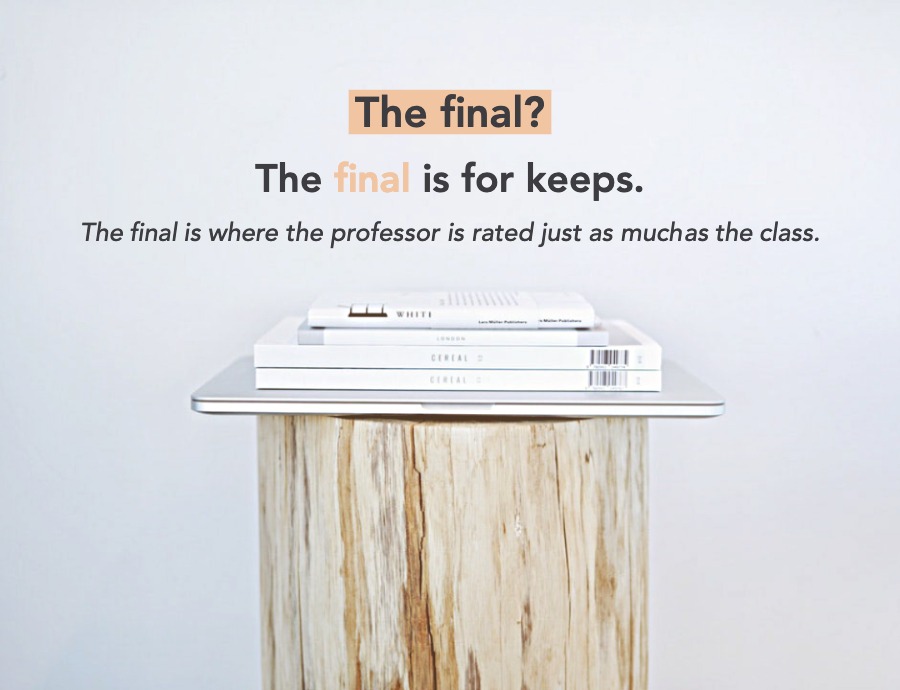Marks! Sweet marks! Those lovely marks are tokens of ephemeral beauty to make the morning dew on a spring blossom blush: as you move through the season towards them they seem the most important thing in the world, then you get them, then they’re gone. But before they go there are lessons you should learn!
The most important lesson is that it doesn’t matter what everyone else got. Every announcement of marks starts a tiny and terribly boring fantasy examination league with students comparing their scores, arguing for and against certain averages, and wondering if the whole class’s results will be scaled or shifted. But if that’s going to happen, it’ll happen, and no amount of nattering among the class it going to change the fact. Trust me, the professor has their own internal metrics making that decision.
The most dangerous risk of marks is looking at a good mark and thinking “Woohoo, I’m awesome at this!” I mean, don’t worry, you are, but there’s (100 minus your good mark) signs saying you could get even better before the final. Where those marks might be a bigger part of that exam! Check through the questions and see if there’s something you’re not so strong at. Or is there a mistake you make in every procedure? Whichever the problem, find it and fix it!
You don’t need to tiger mom yourself into thinking that an A sucks because it’s not an A+. But if a tiger comes up and points out where you’re having problems, you’d be foolish to ignore them. A few marks on the midterm might be a symptom of a larger problem, one which could cost you more on a bigger final question.
In the old days of exclusive (translation: for the really rich) university there would be much more personal attention. Professors would offer one-on-one advice helping students get stronger. Not just office hours (which are great! You should use them!) but individual knowledge of each student, because there were only four or five students in the class, and they were probably going to be at least an Earl. Nowadays we have many more students, so we’ve made it easier for professors to point out where we can improve. Those pointers are the red crosses on examinations.
Don’t take lower marks as a stress, or a panic. They’re a guide telling you exactly what to work on next.
The most important lesson is that it doesn’t matter what everyone else got. Every announcement of marks starts a tiny and terribly boring fantasy examination league with students comparing their scores, arguing for and against certain averages, and wondering if the whole class’s results will be scaled or shifted. But if that’s going to happen, it’ll happen, and no amount of nattering among the class it going to change the fact. Trust me, the professor has their own internal metrics making that decision.
The most dangerous risk of marks is looking at a good mark and thinking “Woohoo, I’m awesome at this!” I mean, don’t worry, you are, but there’s (100 minus your good mark) signs saying you could get even better before the final. Where those marks might be a bigger part of that exam! Check through the questions and see if there’s something you’re not so strong at. Or is there a mistake you make in every procedure? Whichever the problem, find it and fix it!
If a tiger points out your problems you’d be a fool to ignore them.
You don’t need to tiger mom yourself into thinking that an A sucks because it’s not an A+. But if a tiger comes up and points out where you’re having problems, you’d be foolish to ignore them. A few marks on the midterm might be a symptom of a larger problem, one which could cost you more on a bigger final question.
In the old days of exclusive (translation: for the really rich) university there would be much more personal attention. Professors would offer one-on-one advice helping students get stronger. Not just office hours (which are great! You should use them!) but individual knowledge of each student, because there were only four or five students in the class, and they were probably going to be at least an Earl. Nowadays we have many more students, so we’ve made it easier for professors to point out where we can improve. Those pointers are the red crosses on examinations.
Don’t take lower marks as a stress, or a panic. They’re a guide telling you exactly what to work on next.








